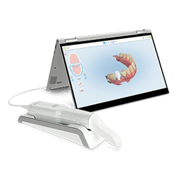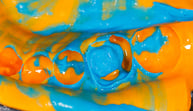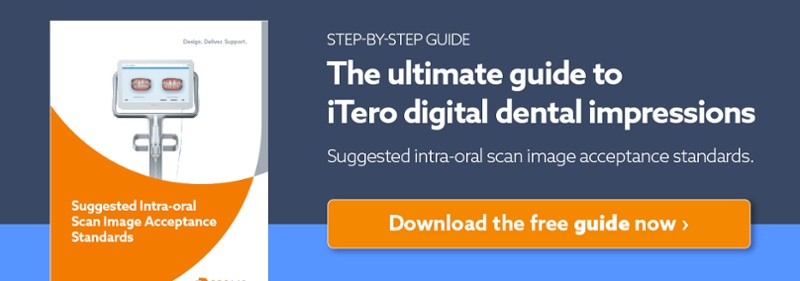It’s no surprise that today’s technological revolution is changing the way patients make decisions, including decisions regarding their oral health.
The advancements in dentistry include:
- CAD/CAM-assisted crowns/bridges
- Digitally-assisted treatment planning for implant surgery
- Restorations
- Impressions
- Diagnostic tools such as digital radiography and digital imaging of fiber-optic trans-illumination, and optical coherence tomography
These advances have improved the quality of dental care and increased the efficiency and predictability of procedures for patients. However, some patients are resistant to these technological advances in dentistry. Most of this technology is brand new and lacks empirical analysis over an extended period. Your patients might ask you if technology is making dental impressions better or worse. If you are asked, discuss the following points to help put them at ease with the newest innovations in the world of dentistry.
What is the Difference Between Traditional Impressions and Digital Impressions?
The days of patients’ biting down on a tray of goopy putty are gone. With the emergence of digital impression software, digital impressions are replacing traditional impressions.
 A digital impression is a virtual scan that creates a map of your patient’s teeth. This digital map allows you to view a patient’s teeth on a computer screen rather than using a mirror, taking a mold, or looking at an X-ray, which is the traditional method. A digital impression can be captured by a series of digital photographs or a digital video. Both methods capture precise measurements in the mouth and send numerous small images immediately stitched together by the digital impression machine’s software to form an accurate map of your patient’s mouth. Most of the time, patients can view these images on a chairside monitor.
A digital impression is a virtual scan that creates a map of your patient’s teeth. This digital map allows you to view a patient’s teeth on a computer screen rather than using a mirror, taking a mold, or looking at an X-ray, which is the traditional method. A digital impression can be captured by a series of digital photographs or a digital video. Both methods capture precise measurements in the mouth and send numerous small images immediately stitched together by the digital impression machine’s software to form an accurate map of your patient’s mouth. Most of the time, patients can view these images on a chairside monitor.
 A traditional impression can be particularly uncomfortable for patients with a sensitive gag reflex. In addition to the messy and uncomfortable process, patients who are unable to hold still due to gagging could shift the impression tray and make the mold less accurate, thus increasing room for error in the restoration process.
A traditional impression can be particularly uncomfortable for patients with a sensitive gag reflex. In addition to the messy and uncomfortable process, patients who are unable to hold still due to gagging could shift the impression tray and make the mold less accurate, thus increasing room for error in the restoration process.
What Are the Advantages of Digital Impressions for Dentists?
One of the most significant advantages of digital impressions is eliminating many chemical-based processes for technicians and dentists. By eliminating these processes, the accumulation of errors within the treatment and manufacturing cycle is no longer a factor.
Some of these processes include:
- Setting of impression materials
- Setting of die stone and stone base material
- Casting and pressing investments
- Shrinkage of conventional feldspathic ceramic materials
By eliminating the process of conventional impressions, dentists need not be concerned with the possibility of error due to:
- Air bubbles
- Tearing of impression material
- Tray movement
- Too little impression material
- Inadequate tray adhesive
- Distortion resulting from disinfection procedures
Additionally, centric occlusion has historically been registered through silicone or wax occlusal registrations. There is no material placed between the maxillary and mandibular teeth when performed digitally. This dramatically reduces the risk of obtaining an inaccurate measurement.
Why Should My Office Go Digital?
For both you and your patients, the advantages of using digital impressions outweigh traditional methods. This new technology provides increased accuracy, efficiency, and productivity for the practice and your patients.
Additionally, it allows dentists to scan or email the virtual impressions to the laboratory rather than sending traditional impressions by mail. With the emergence of digital dentistry technologies, switching from traditional impressions to digital impressions will provide your patients with shorter office visits and yield more accurate restorative outcomes.
Speak to a DDS Lab technician today to learn more about how cutting-edge technology can help your office offer digital impressions.
Click here to schedule a consultation with our technical team ›

References:
https://americadental.com/uncategorized/benefits-using-dental-implant-surgical-guides/
http://www.dentalproductsreport.com/dental/article/how-technology-changing-implant-workflow
https://www.aegisdentalnetwork.com/id/2007/10/new-technologies-for-easier-and-more-accurate-impressions
https://www.verywellhealth.com/digital-versions-of-dental-impressions-1059374